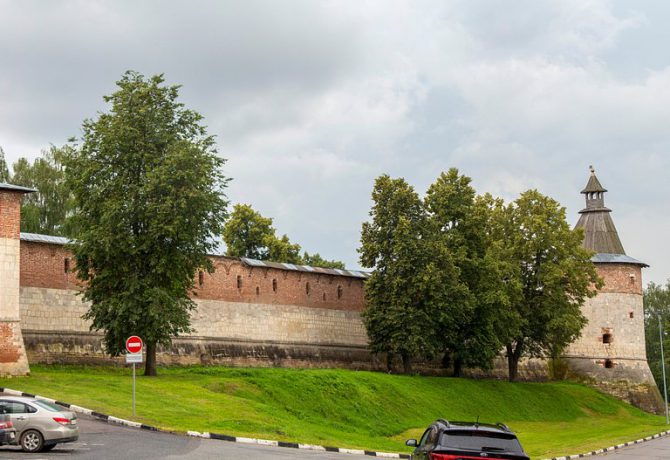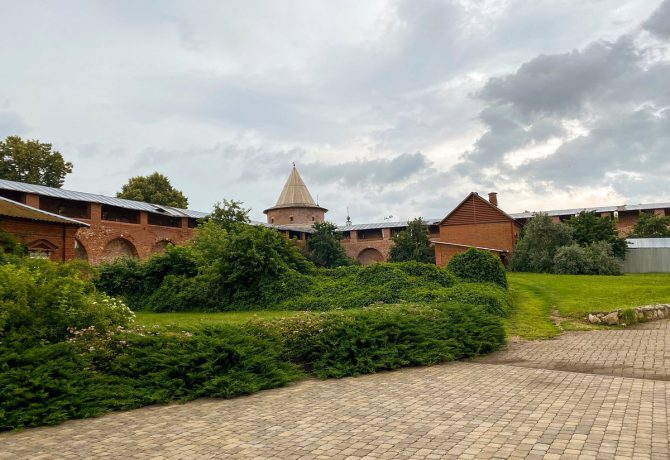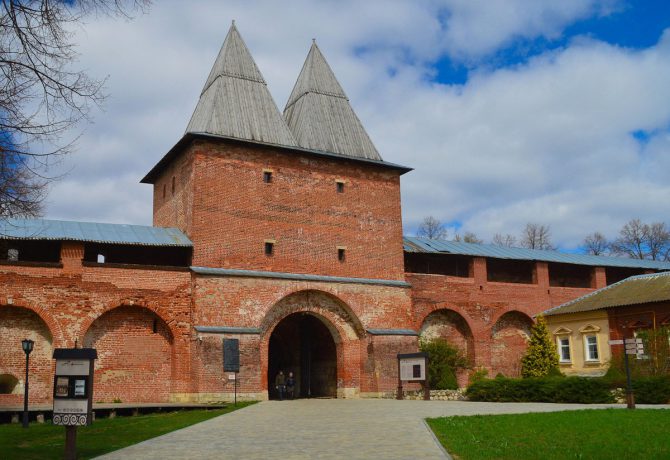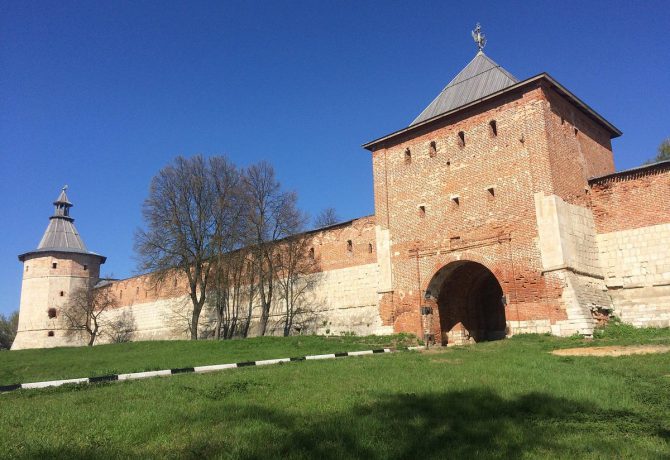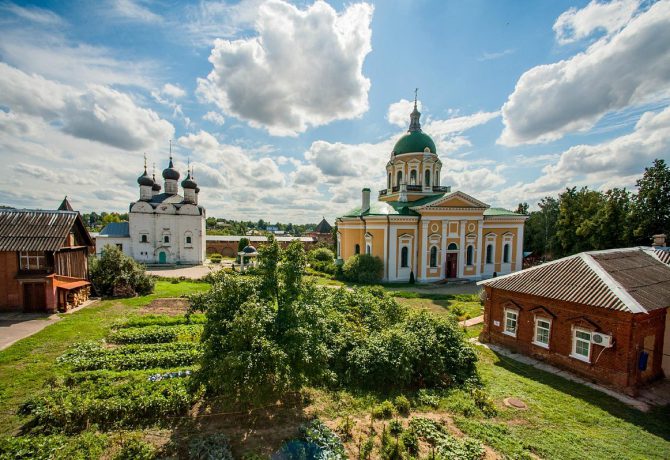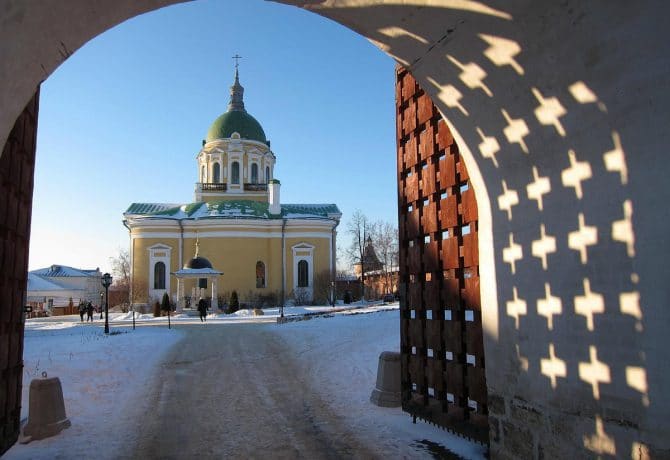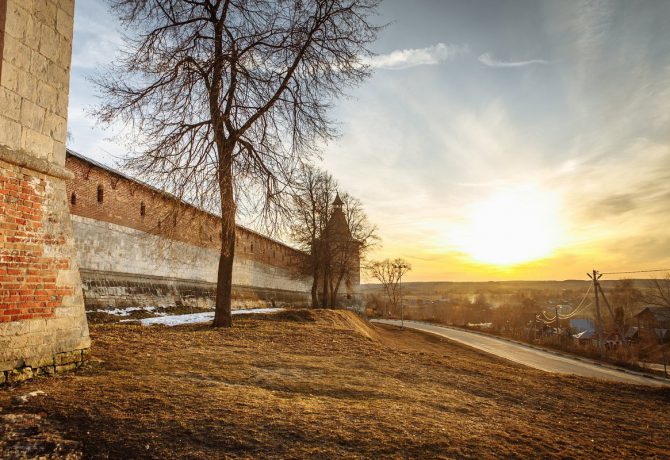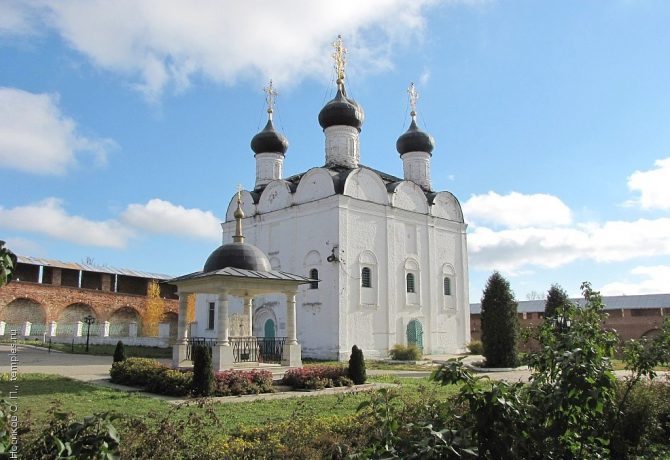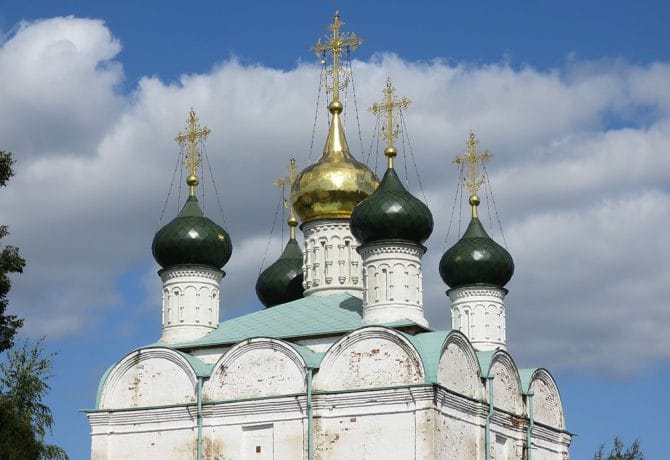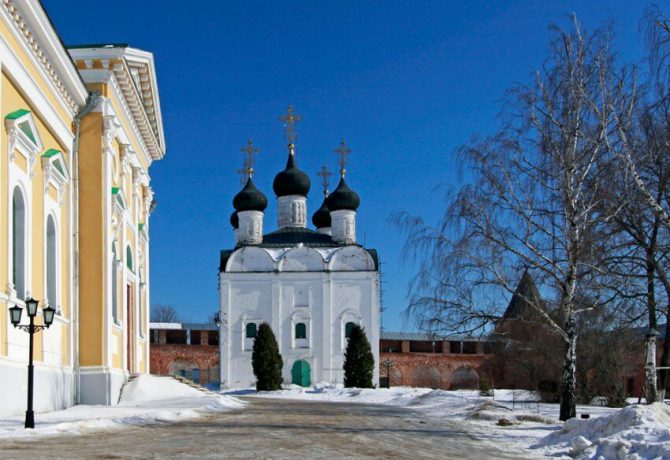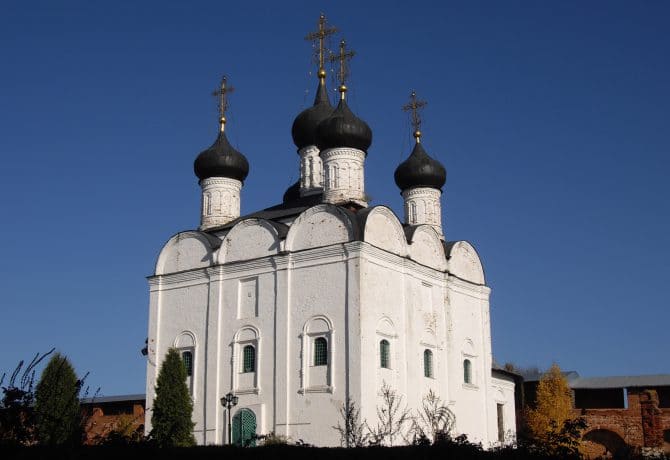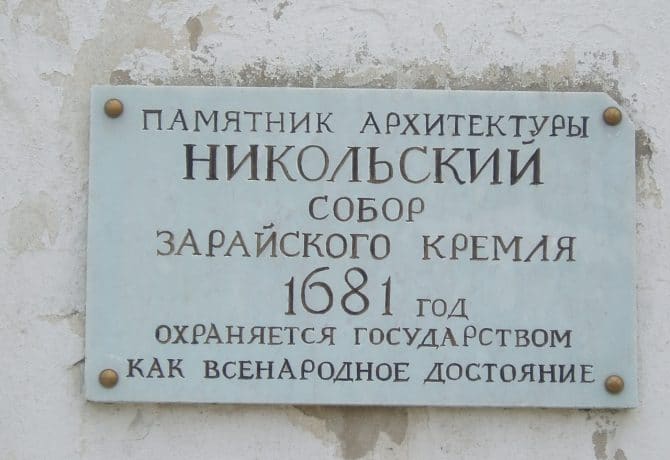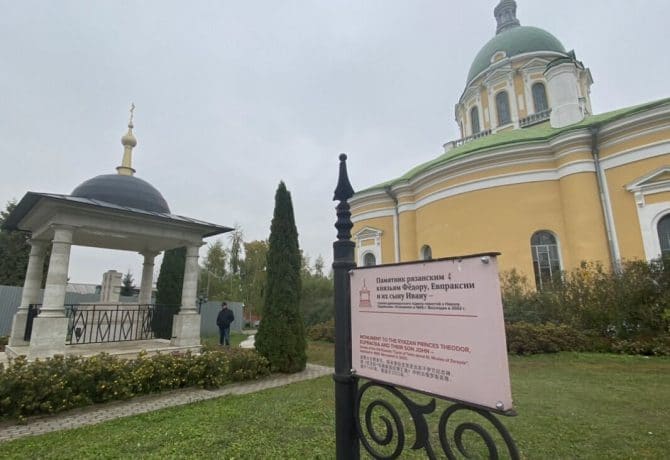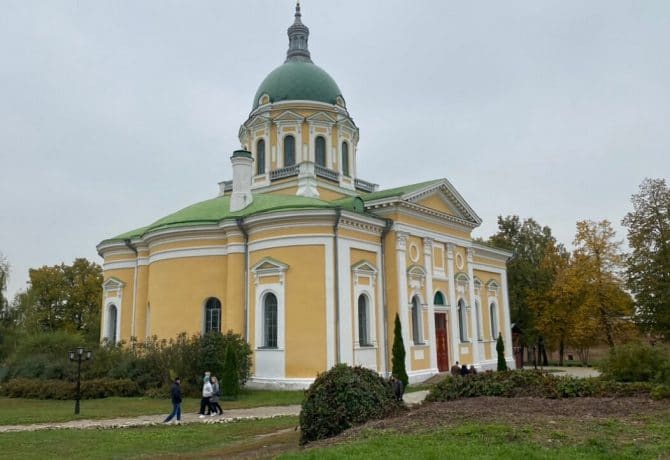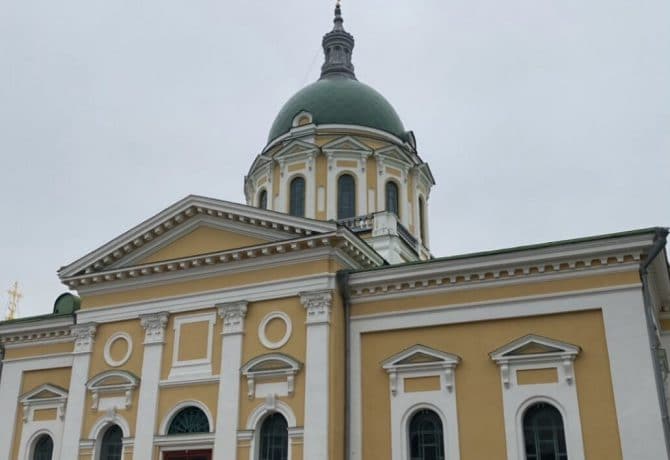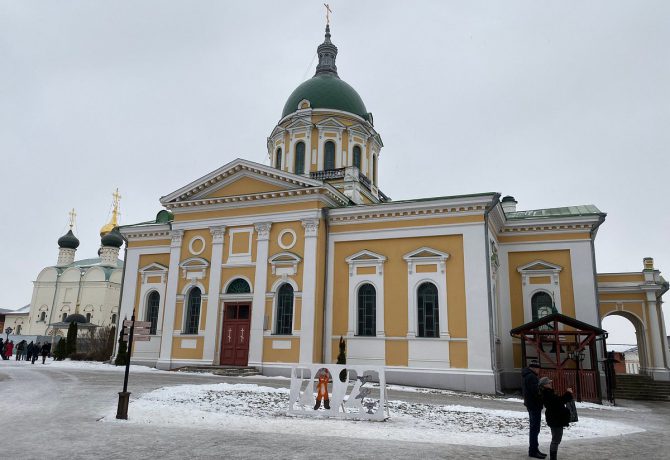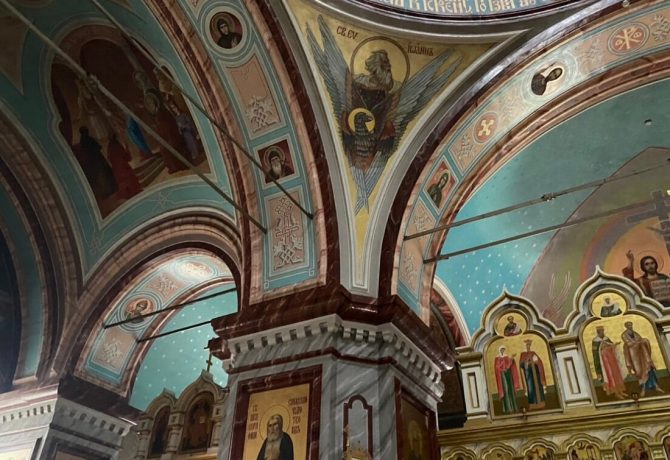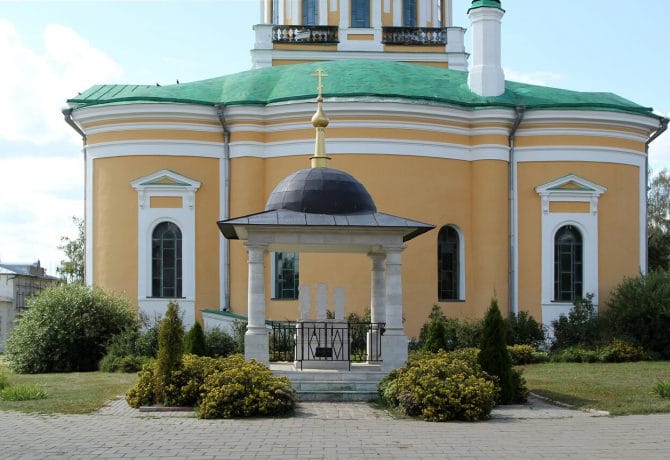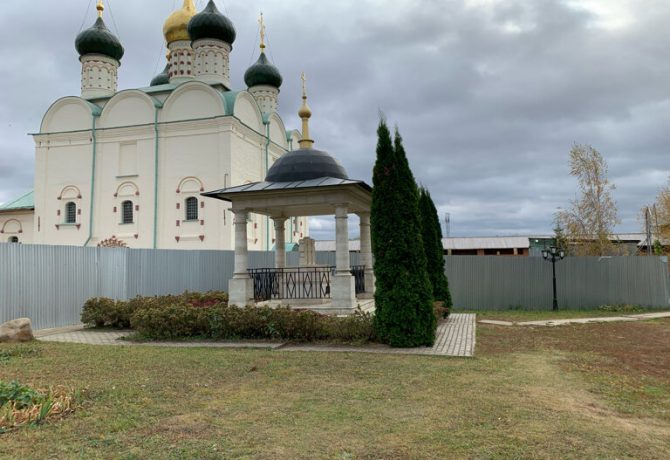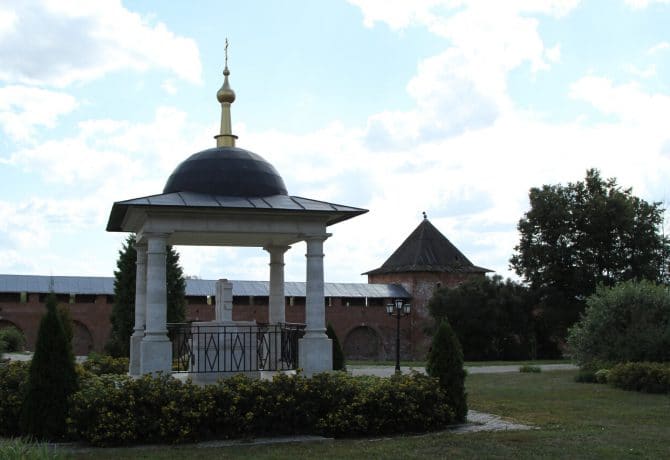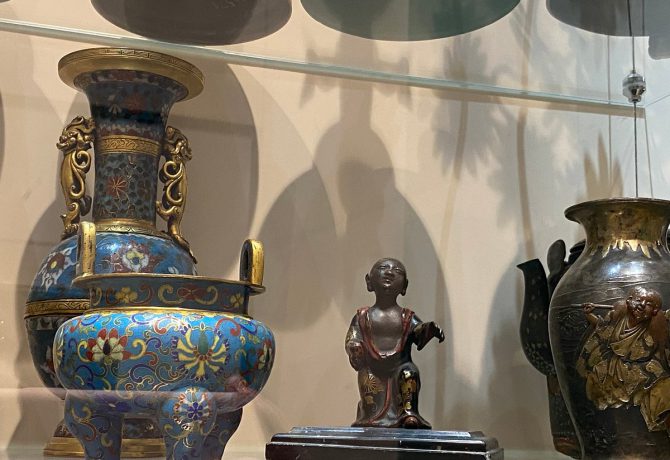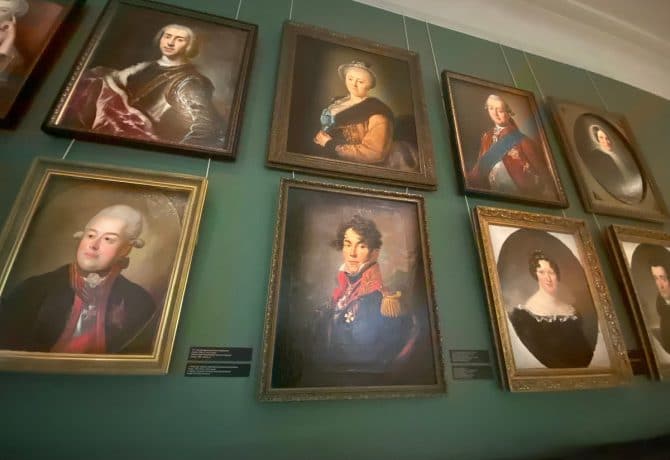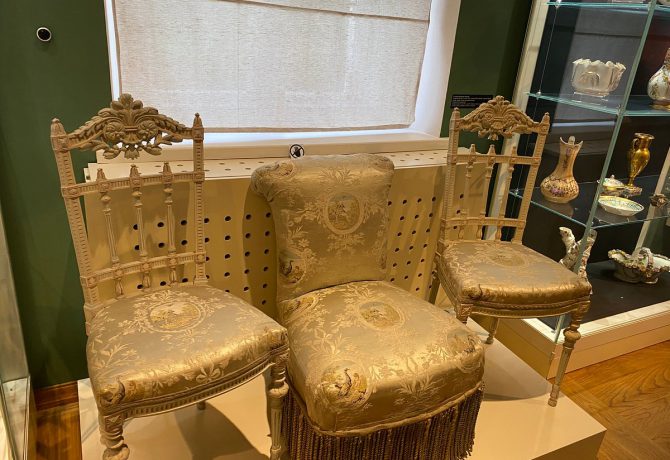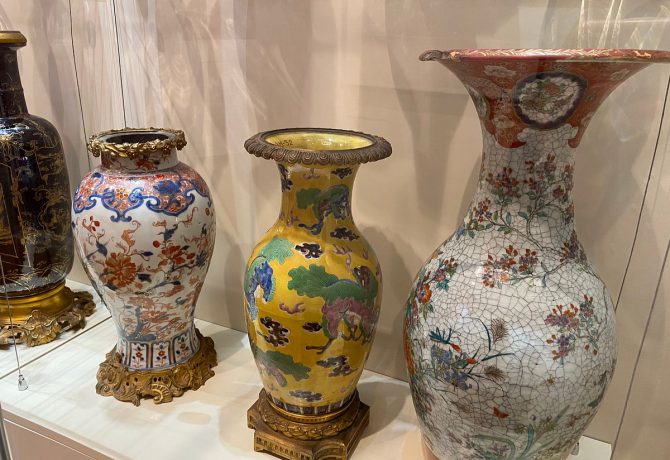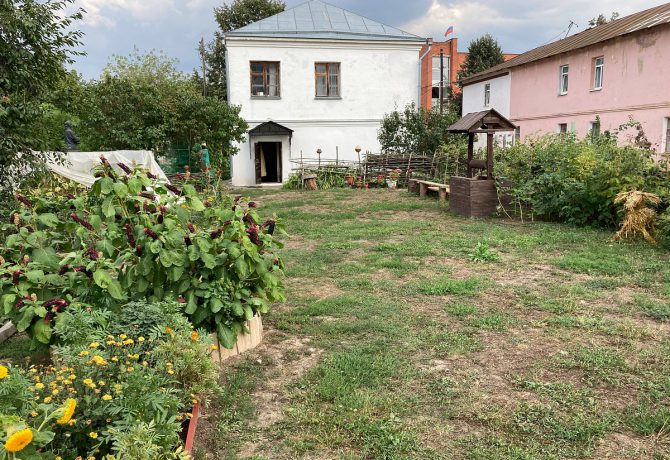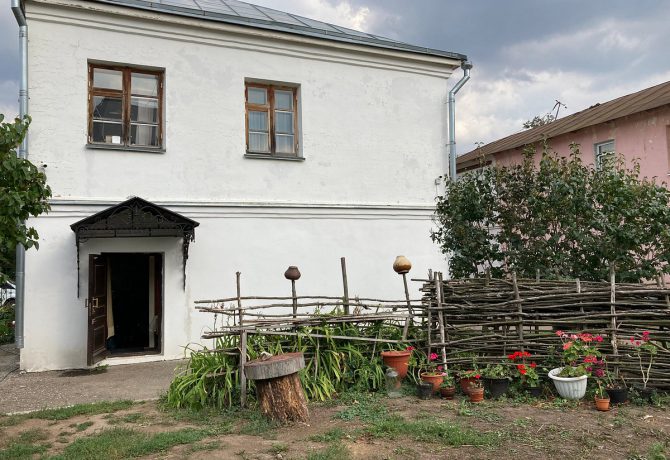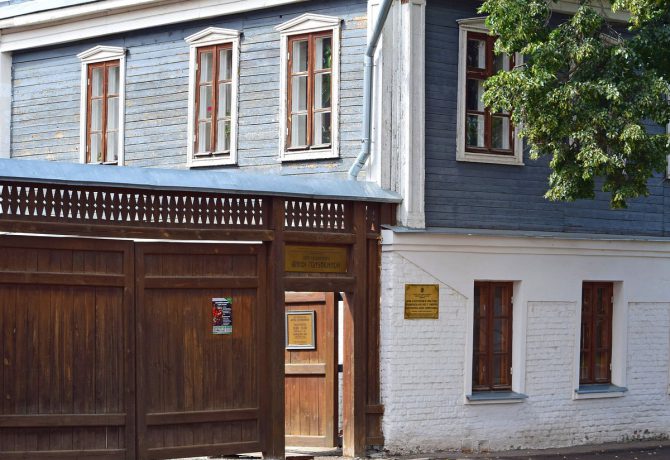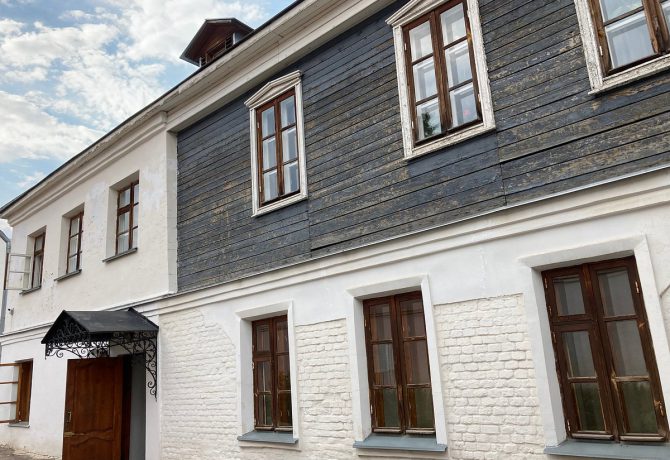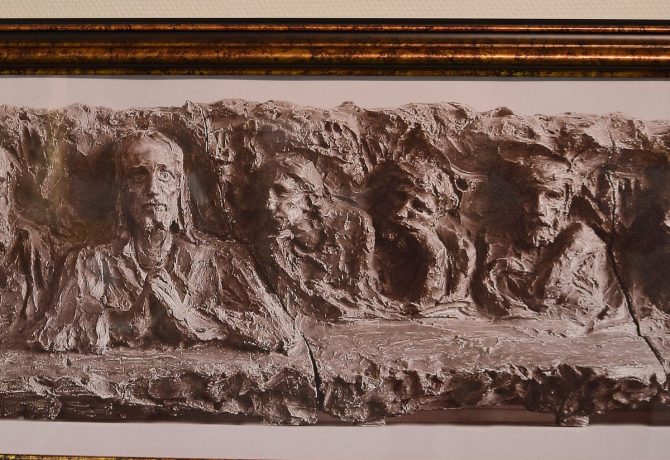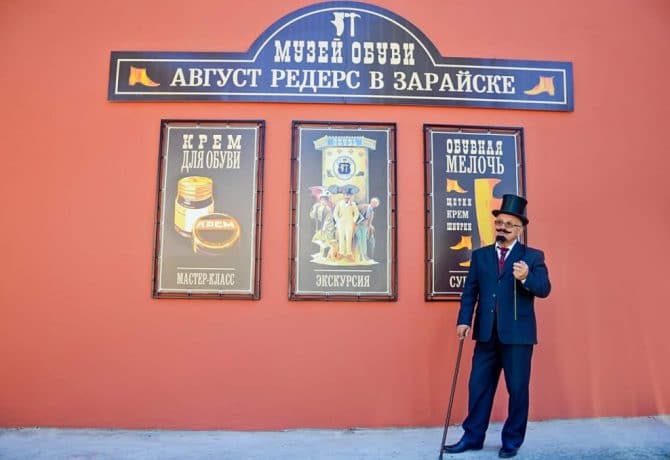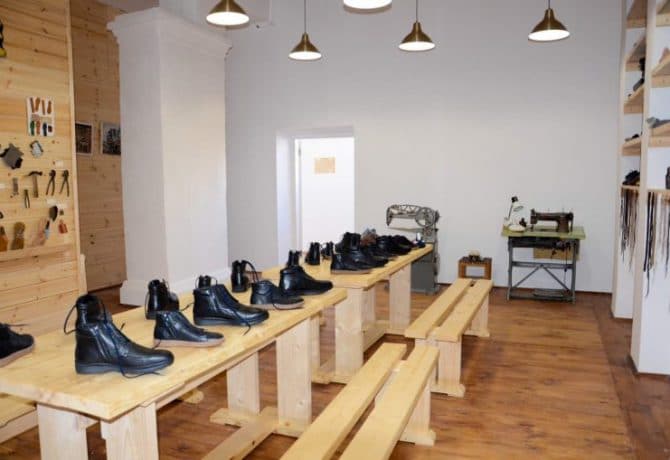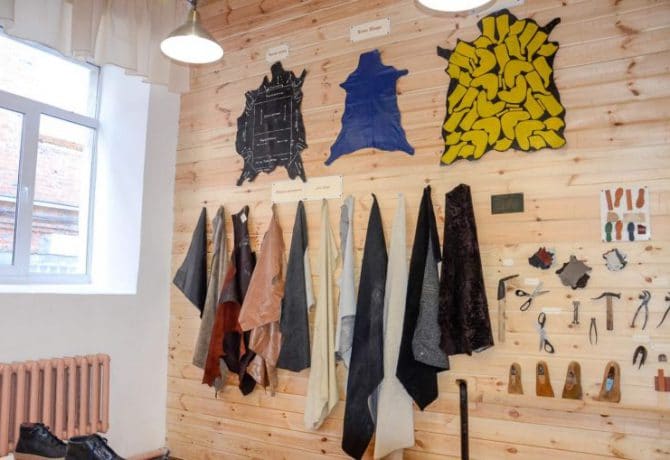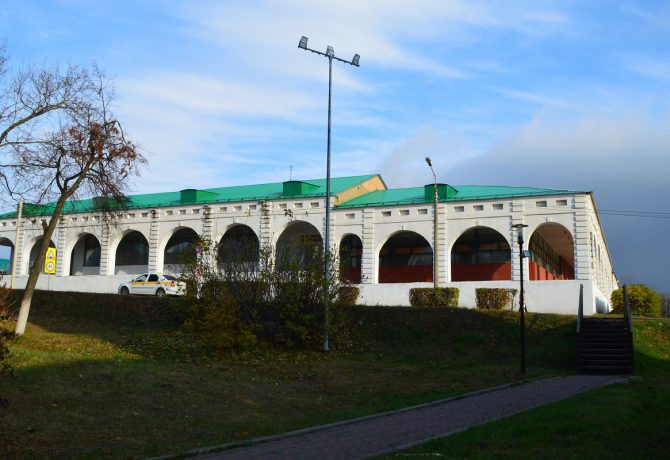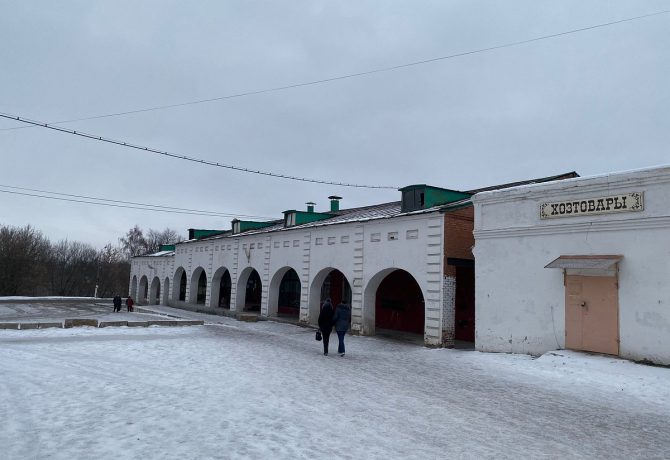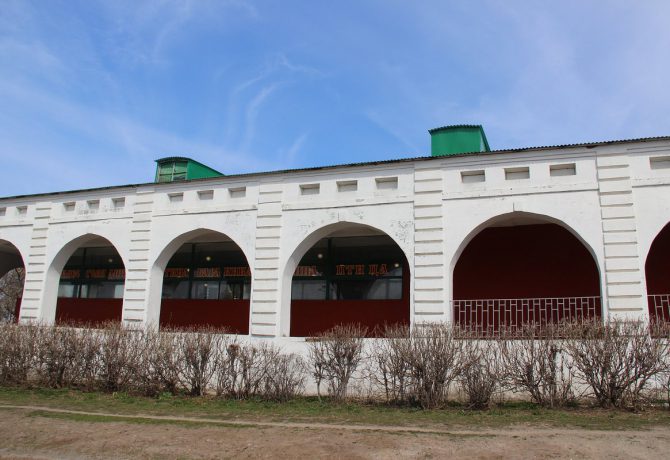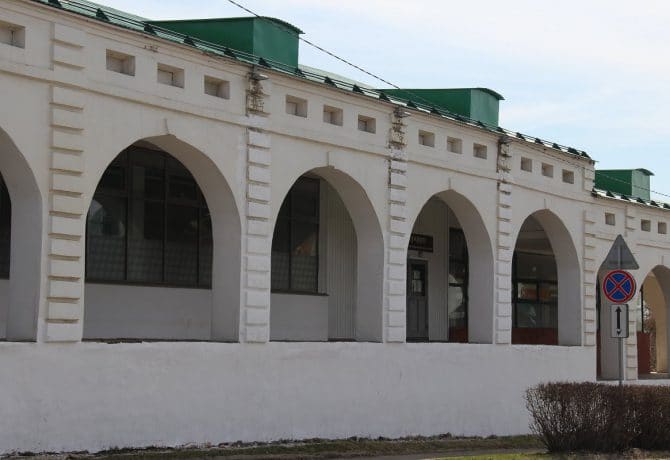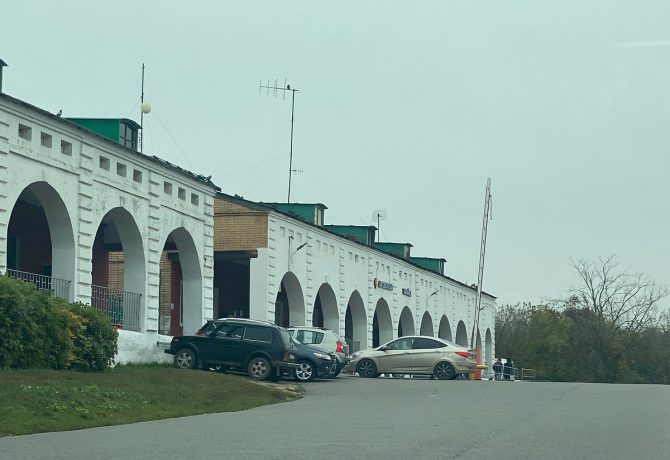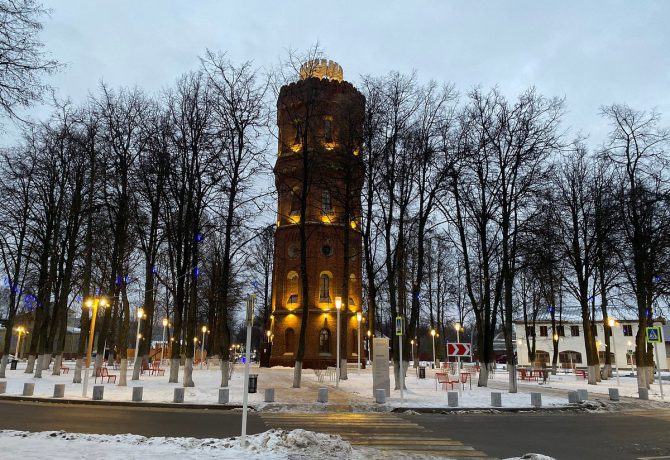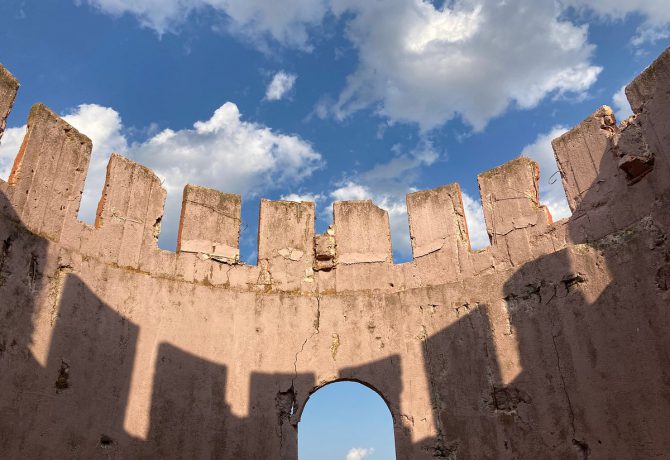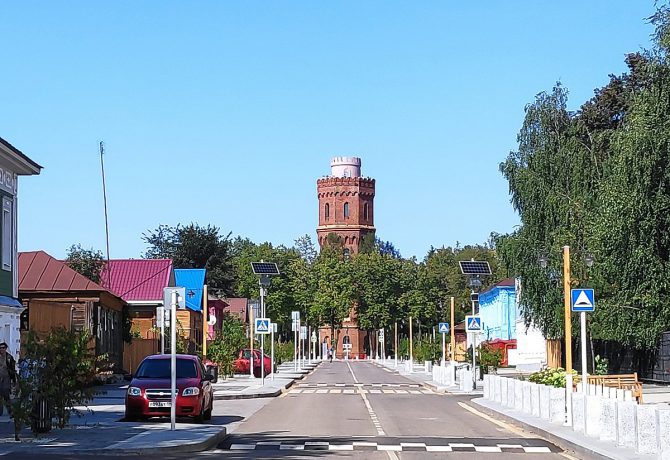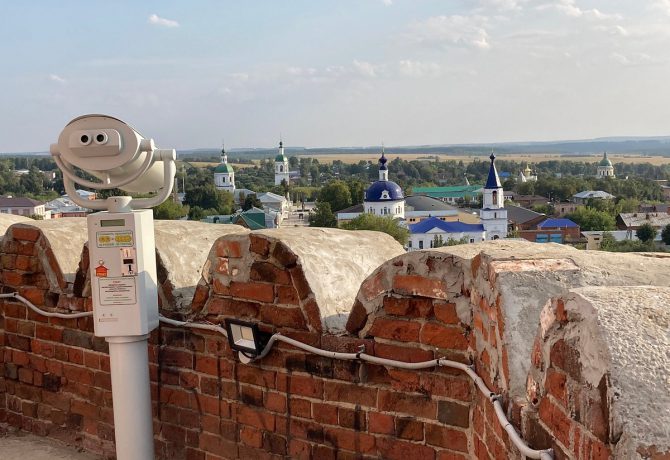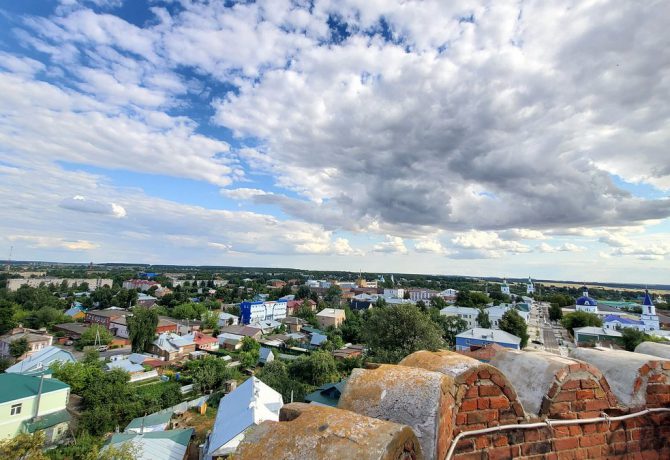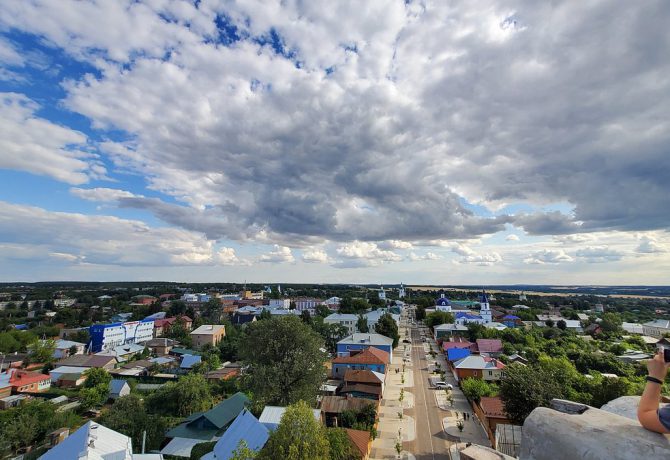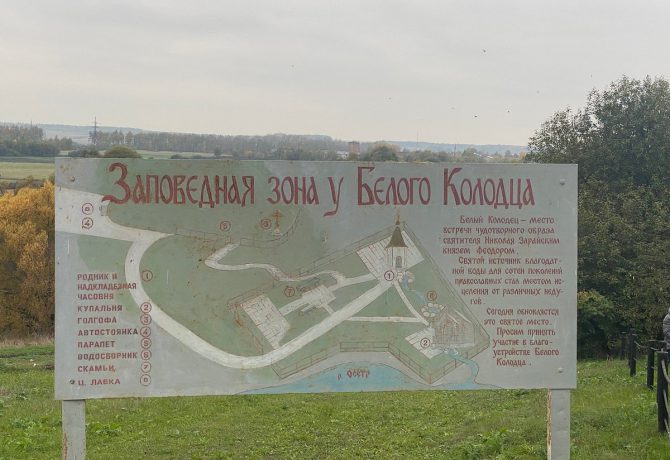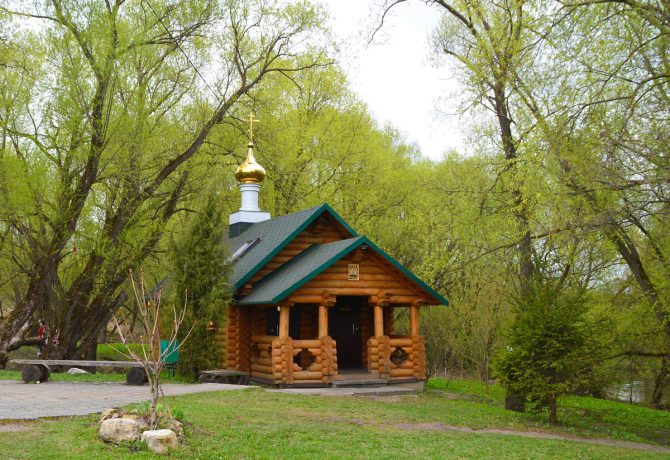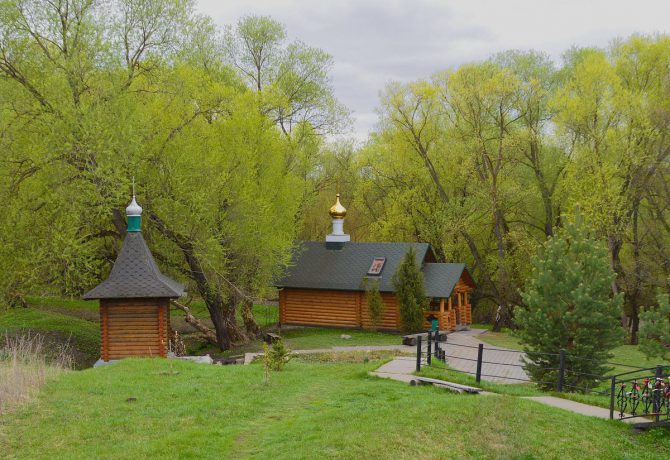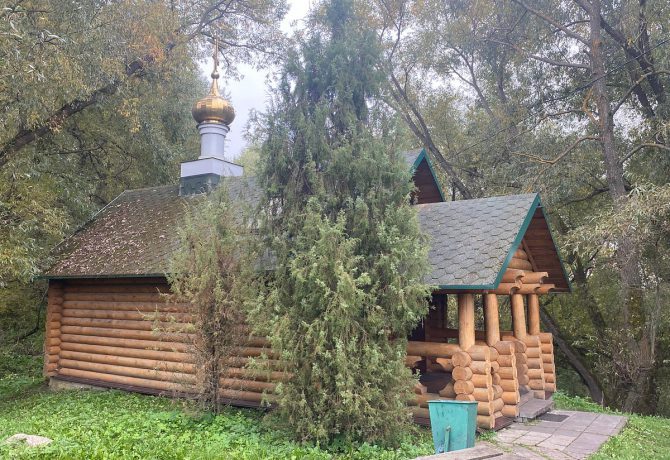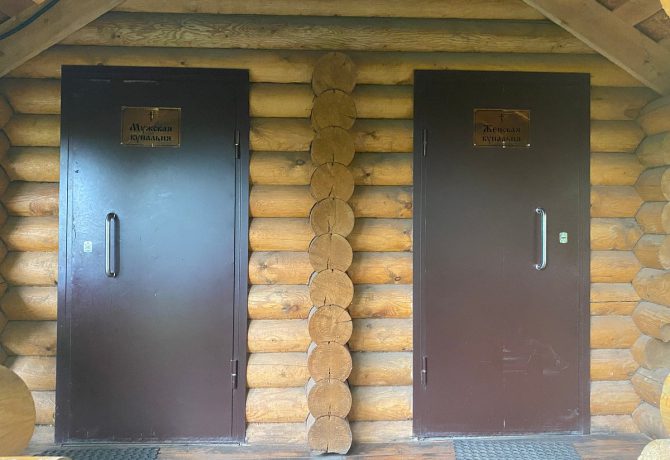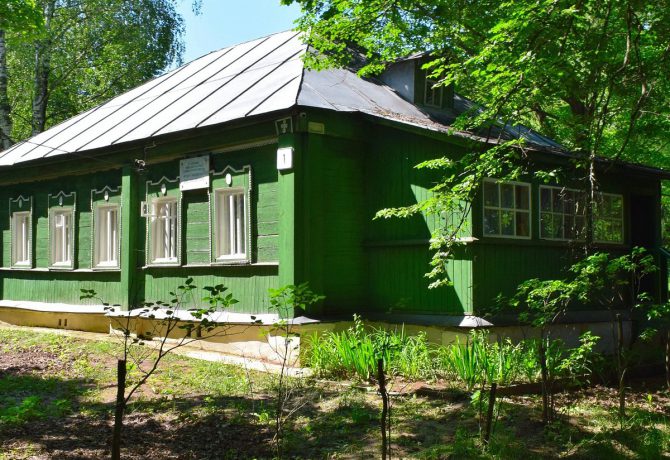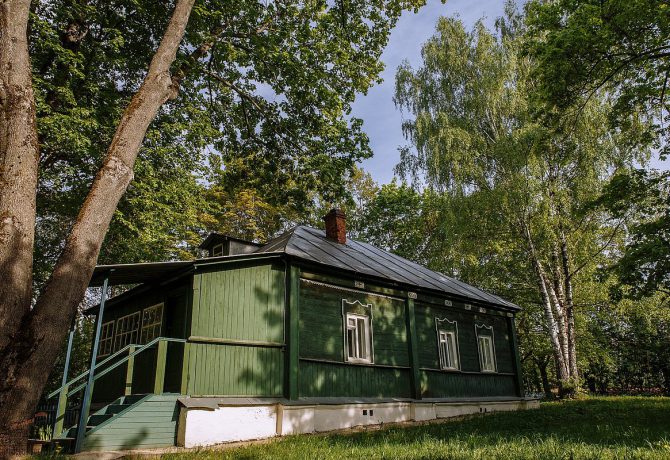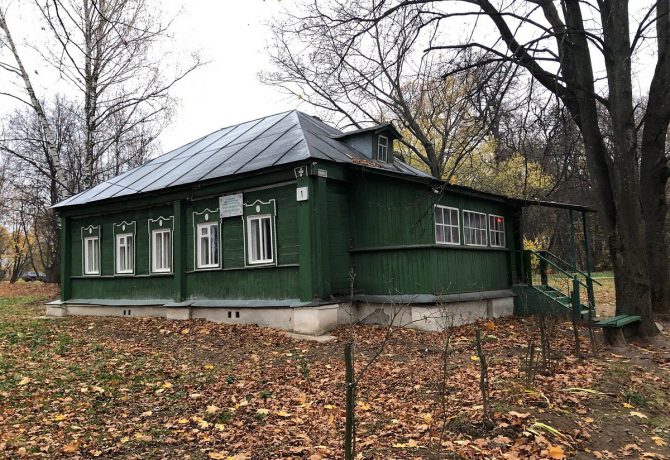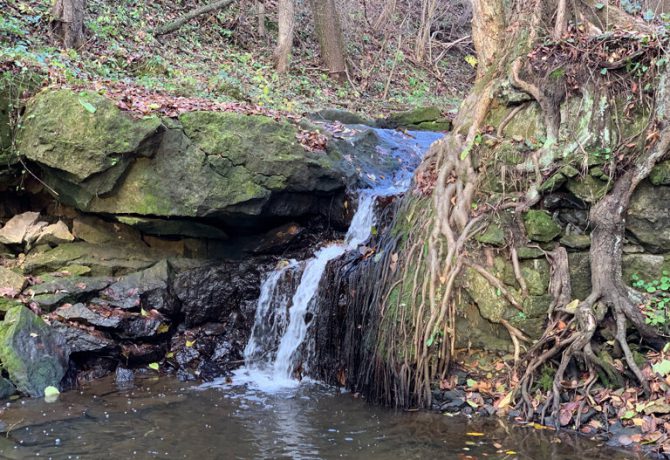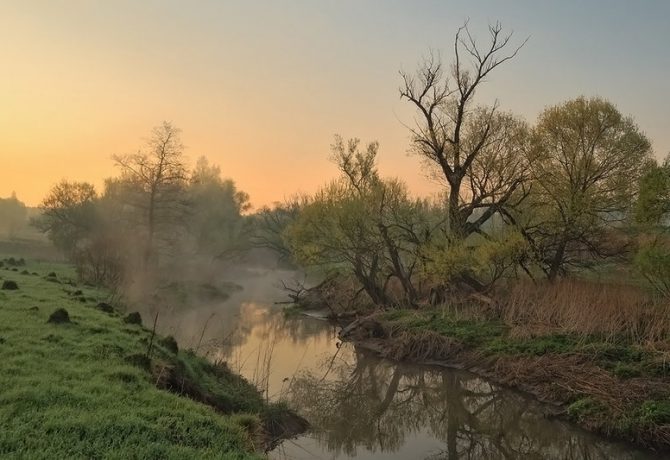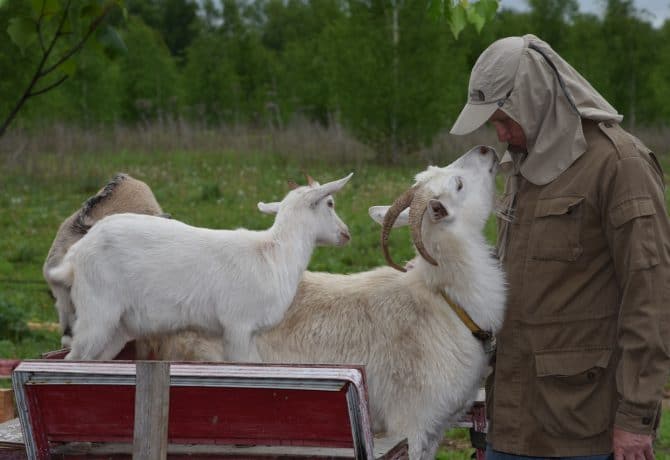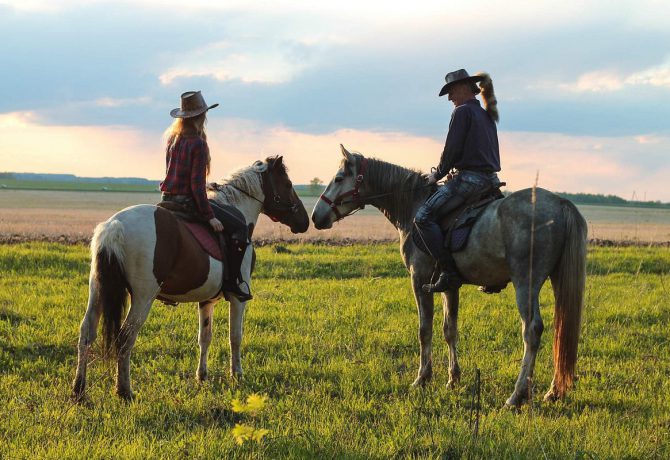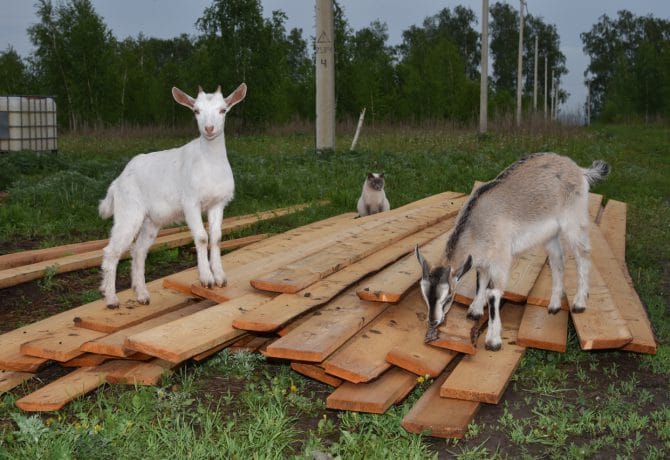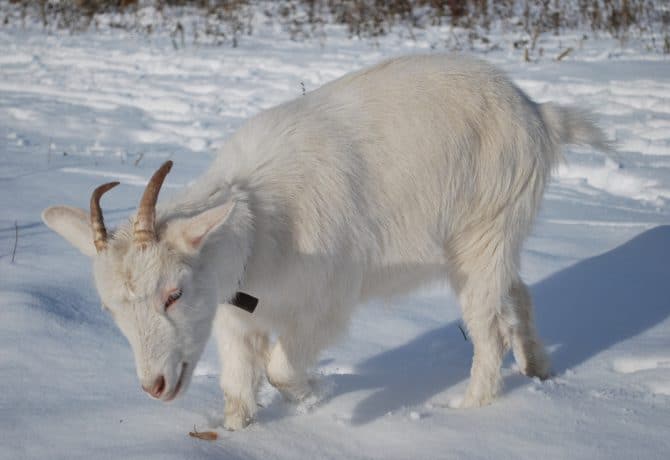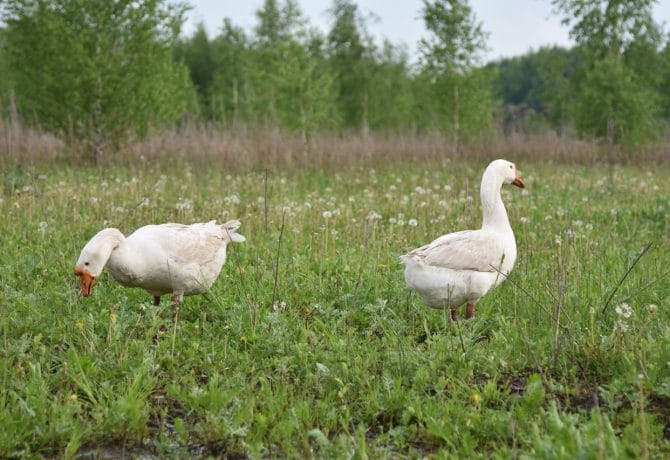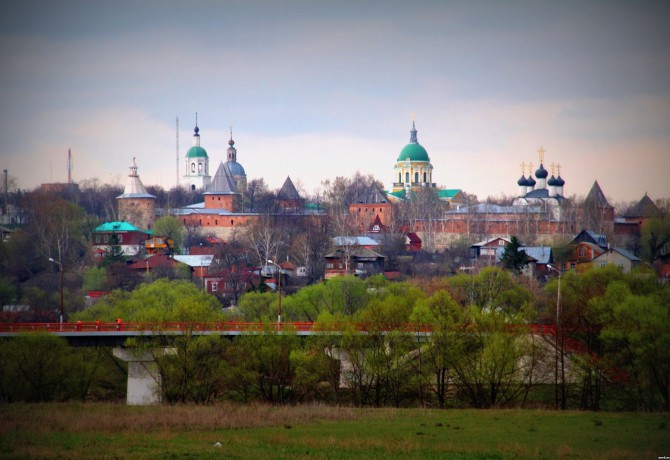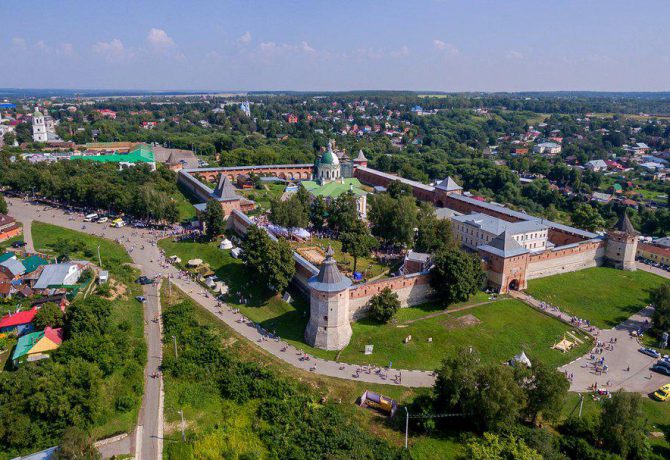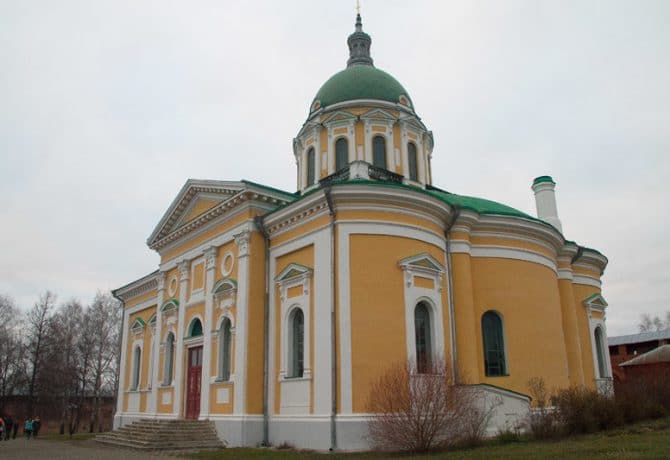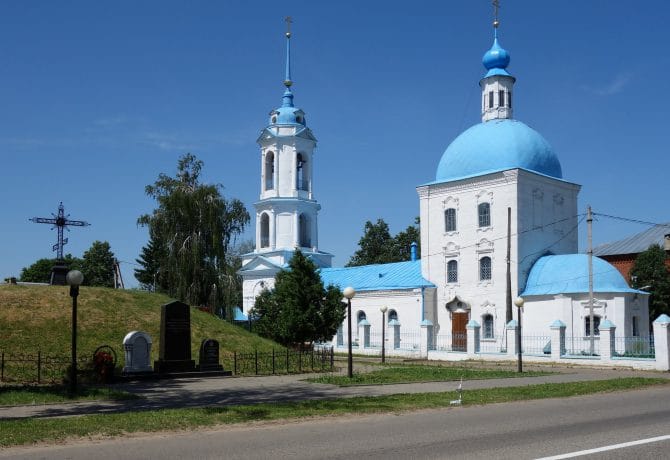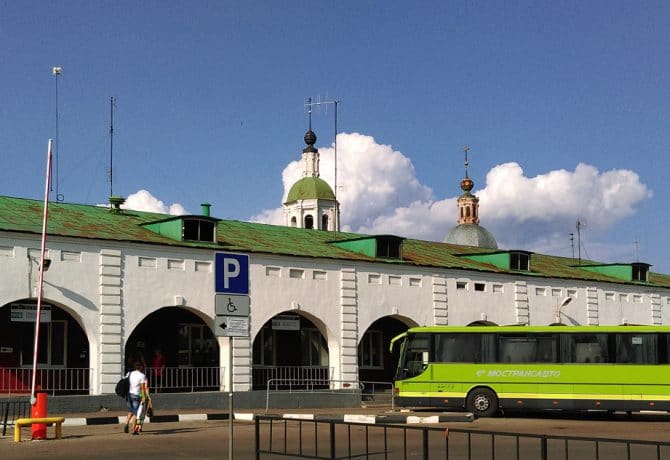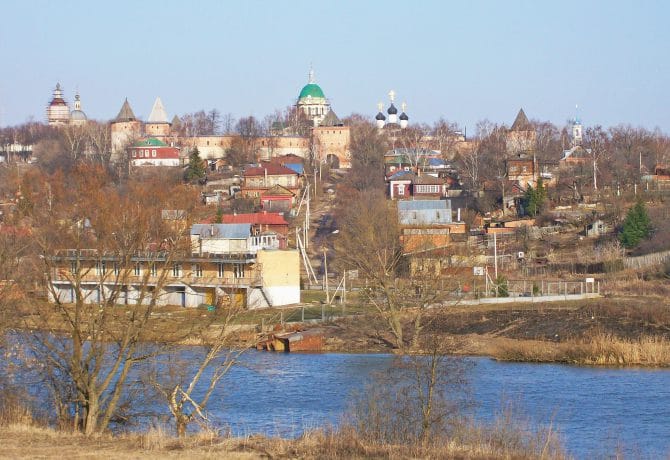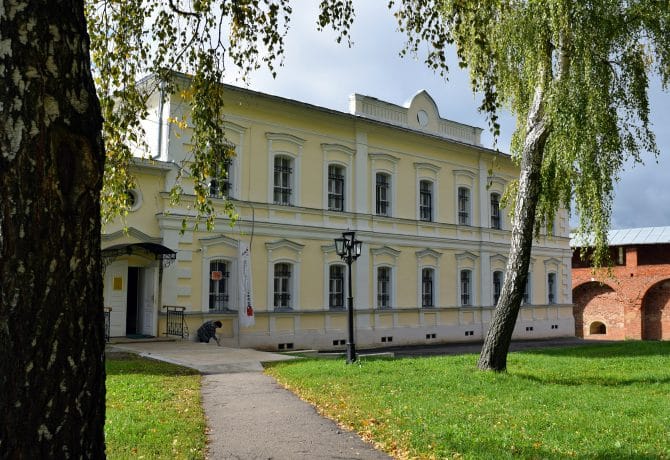The Moscow region is rich in places interesting for domestic and foreign tourists. One of them is Zaraysk. The first mention of this small provincial town dates back to 1146. The period of economic prosperity of Zaraysk lasted from the XVII to the middle of the XIX century. For more than two centuries, the Russian city played the role of a major trading center of three administrative territories: the Ryazan district, Moscow and later the Ryazan provinces.
Now, in [y], 22.77 thousand people live in Zaraysk, which occupies an area of 20.5 square kilometers. In the compact city there are 12 industrial enterprises, 4 museums, a leisure center “Victory”, 2 cathedrals, 4 churches, an ice palace and 10 sculptural monuments. Zaraysk, which belongs administratively to the Moscow region, is located 138 km southeast of the Russian capital.
The city is separated from the Moscow Ring Road by 117 km. The distance from Zaraysk to the border with the Ryazan region is 10.5 km. Tourists visit the city to see with their own eyes several objects interesting for curious travelers:
- Zaraysk Kremlin;
- ancient merchant houses belonging to the XVII-XIX centuries;
- museums and monuments of Zaraysk;
- natural and sacred sights of the city and surroundings;
- the historical center of Zaraysk, where you can feel the almost unchanged way of life of the XVIII-XIX centuries.
- 1 Zaraysk Kremlin
- 2 Cathedral of St. Nicholas the Wonderworker
- 3 Cathedral of St. John the Baptist
- 4 Necropolis of Prince Fyodor and Princess Eupraxia and their son
- 5 Museum “Zaraysk Kremlin”
- 6 House-Museum of A. S. Golubkina
- 7 August Reders Shoe Museum
- 8 Shopping arcades
- 9 Water tower
- 10 Holy Spring “White Well”
- 11 Dostoevsky’s manor “Dovoe”
- 12 Waterfalls on Gremuha
- 13 Zoocenter “Svyatopole”
- 14 Provincial Zaraysk
- 15 Attractions Zaraysk on map
Zaraysk Kremlin
The main architectural ensemble and symbol of Zaraysk is located 294 m from the Osyotra River. The Kremlin is 540 metres from the city centre. The construction of the citadel lasted from 1528 to 1531 The initiative to erect a fortification on the right bank of the Sturgeon belonged to Vasily III – the Moscow prince.
During a long historical period – 1533-1591 – the fortress performed defensive functions, protecting the medieval city from the raids of the Kazan and Crimean Tatars. In 1610, the Kremlin played an important role in the fight against the supporters of False Dmitry II. Later, the fortress ceased to be used for defensive purposes. In 1918, the Zaraysk Kremlin received the status of a museum-reserve. Since 2014, a large-scale restoration of the fortress towers and walls has been carried out.
The Zaraysk Kremlin, appearing before modern visitors, occupies an area of 23 thousand square meters. m. The length of the fortress wall, which is built in the form of a rectangle according to the canons of medieval Italian castles, is 648 m. Visitors enter the territory of the Kremlin through the Epiphany Gate. The wall is fortified with seven powerful towers.
On the territory of the Zaraysky Kremlin there are two sacred buildings: St. Nicholas Cathedral, built in 1681, and St. John the Baptist Church, built in 1904. Art exhibitions are regularly held in its halls.
Most tourists prefer to come to explore the ancient fortress in the warmer months of spring, autumn and summer. A visit to the territory of the Kremlin with a sightseeing tour of 5 participants costs 2 thousand rubles. Access is open from 8 am to 6 pm (in the autumn-winter period – until 16:00).
Site: http://museumzaraysk.ru/?venue=zarajskij-kreml
Address: Zaraysk, Museum Street, Kremlin.
Cathedral of St. Nicholas the Wonderworker
On the territory of the Zaraysk Kremlin is the most ancient sacred building of the city and the surrounding area – St. Nicholas Cathedral. The first wooden temple was built at the beginning of the XIII century. In 1225, an icon of Nicholas the Wonderworker was brought from Korsun to the cathedral. Now it is the main shrine of the temple. In the history of the sacred structure, several of the most important events stand out:
- 1528 – the construction of the stone building of the cathedral was completed;
- XVII century – for many years of its existence, the temple has noticeably deteriorated;
- 1681 – the doors of the rebuilt cathedral were opened; the erection of the sacred structure was carried out by decree of Fyodor Alekseevich – the Russian sovereign;
- XVIII century – a baroque iconostasis was installed in the temple;
- XIX century – thanks to talented artists, it was possible to update the painting of the walls and vault;
- 1919 – the Bolsheviks closed the cathedral;
- 1920-1980s – the temple housed a variety of institutions: archive, warehouse, museum;
- January 7, 1992 – after the restoration work in the restored cathedral, the first divine service was held.
The sacred structure is an Orthodox church, decorated with five gilded bulbous domes. Among the famous personalities who visited St. Nicholas Cathedral, there are the names of Sergei of Radonezh and Ivan IV (the Terrible). On the territory of the temple, the townspeople landscaped the holy spring.
The doors of the cathedral are open to visitors daily from 8 am to 6 pm. You can come to the temple at any time of the year. In the spacious hall of the sacred building, services are held, peace and tranquility reign. Entrance to the temple is free.
Address of St. Nicholas Cathedral: Pozharsky Square, 13.
Cathedral of St. John the Baptist
Next to the St. Nicholas Church stands the building of St. John the Baptist Cathedral, built in the style of classicism. Initially, in the XIII century there was a small log church. The fate of the Orthodox church was not easy:
- 1525 – the construction of the stone cathedral was completed;
- XVII-XIX centuries – the temple was repeatedly rebuilt;
- 1901–1904 – the construction of a new building designed by K. Bykovsky, a Russian architect, was completed; modern visitors see this particular structure; the initiators of the construction were the Bakhrushin brothers – representatives of the dynasty of Moscow patrons and entrepreneurs;
- 1928 – the Bolsheviks stopped the divine services and converted the cathedral into a cinema;
- 1992 – the temple was returned to believers;
- 2009 – restoration work was completed.
The cathedral is open to the public from 8:00 to 18:00. Entrance to the building is free. Tourists and parishioners visit St. John the Baptist Cathedral throughout the year.
Address of the temple: Zaraysk, Pozharsky Square.
Necropolis of Prince Fyodor and Princess Eupraxia and their son
In memory of the tragic event that occurred in the distant XIII century in Zaraysk, between the two cathedrals – Nikolsky and St. John the Baptist – there is a grave. In it were buried the bodies of members of the princely family: Fyodor Yurievich, Eupraxia (his wife) and their young son. Initially, in 1238, three stone crosses were installed over the grave. The necropolis recalls the events that occurred in 1237 during the invasion of the Mongol troops on the territory of the Ryazan principality, to which Zaraysk then belonged:
- hordes of Batu – Mongol Khan – located on the Voronezh River;
- Yuri Ingvarevich, prince of Ryazan, sent an embassy to negotiate under the leadership of his son Fyodor;
- Batu Khan demanded concubines in exchange for concessions;
- Fyodor Yurievich, who refused to fulfill the Khan’s wish, and other members of the embassy were killed;
- Aponitsa – a miraculously saved close associate of the prince – buried Fyodor and, having reached the Zaraysky Kremlin, informed Eupraxia about the death of the monarch;
- Mongol troops approaching the fortress surrounded the citadel;
- to avoid captivity, Eupraxia, along with her son, climbed one of the Kremlin towers and jumped down; the fall ended with the death of the princess and the child.
Now visitors to the Kremlin see over the grave of members of the princely family a stone tent with four columns supporting the dome, crowned with a high Orthodox cross. In the summer months, especially in early August, when a memorial service is held in memory of the princes and their son, a large number of pilgrims and tourists gather at the necropolis.
Address: Zaraysky Kremlin, sq. Pozharsky.
Museum “Zaraysk Kremlin”
Provincial Zaraysk is not rich in cultural institutions. Of paramount importance among the few local attractions belongs to the “Zaraysk Kremlin” – a museum founded in October 1918 For a long period of time its expositions were located in different buildings. Since 1924, the museum occupied the spacious halls of two adjacent institutions: the Theological School and the Presence Places.
Since 1936, the institution of culture was in serious condition. The exhibits were moved to the halls of the Trinity Church. The revival of the museum began in the 1970s. The collections were returned to the premises of the Presence Places in 2014.
- “Western European art of the XVII-XX centuries”;
- “Archaeological finds of the Upper Paleolithic in Zaraysk”;
- “Russian Art of the XVIII–XX Centuries”.
Museum staff conduct special sessions to acquaint visitors with the rich collections of art and household items belonging to different historical eras. Most of the exhibits were created from the XVII to the beginning of the XX century. The museum includes 10 thematic sections:
- household items;
- 3.5 thousand graphic portraits;
- 150 bone and 200 thousand stone products of the Upper Paleolithic;
- paintings by famous painters: V. Sokolov, Y. Clover; I. Shishkin, S. Ivanov, V. Maksimov, I. Repin and others;
- Czech and English glassware;
- 4.7 thousand tissue samples;
- more than 600 ceramic products;
- 180 pieces of furniture;
- metal products;
- weapons: Western European rapiers, Japanese katanas, Turkish yatagans, French pistols and much more.
The Kremlin Museum receives visitors daily, excluding Mondays and Tuesdays, from 10:00 to 18:00. The cost of the session for one person is 200 rubles (adults), 150 rubles (pensioners) and 100 rubles (schoolchildren). The duration of each event is 60 minutes. During the day, six sessions are held accompanied by a professional guide.
Address: Museum street, 1A. Site: http://museumzaraysk.ru/
House-Museum of A. S. Golubkina
580 m north-east of the Kremlin is a two-storey wooden house on a powerful stone base. On the gate adjacent to the blue and white building of the institution, there is a sign “House-Museum of A. S. Golubkina”. The memorial object is associated with the name of the famous sculptor, who was born in Zaraysk on January 28, 1864 Now most of the works of A. S. Golubkina are presented in the halls of the St. Petersburg Russian Museum.
The building where Anna Semenovna was born was built at the beginning of the XIX century. In 1841, this house was bought by Polikarp Golubkin – the grandfather of the future sculptor. Anna Semenovna lived here until the age of 25 before her departure to study in Moscow. She returned here only in 1927, when she fell seriously ill. On September 7, A. S. Golubkina passed away.
The first exposition of the house-museum was opened in 1974 This year is considered to be the date of foundation of the memorial institution. Now the exposition of the museum is located on two floors:
- sculptural works made by A. S. Golubkina; most of them are copies of works exhibited in the Russian Museum;
- furniture, documents, household items, books – everything related to the life of Anna Semenovna and her relatives.
The museum receives visitors from Tuesday to Sunday from 11:00 to 17:00. The cost of the tour, which includes 5 participants, is 1300 rubles. Entrance ticket for an adult visitor is 60 rubles, for schoolchildren and pensioners – 40 rubles.
Address of the museum: Dzerzhinskogo str., 38.
Site: http://museumzaraysk.ru/?venue=dom-as-golubkinoj
August Reders Shoe Museum
Zaraysk is associated with the name of August Reders, a German entrepreneur who founded a shoe factory in the city in 1868. A little later, an industrialist from Germany laid out a cozy park. In this green oasis appeared the first museum of shoes, which existed for several years. The factory, founded by A. Reders, is still in use.
The new museum opened its doors to visitors recently, in August 2018, the Institution of culture includes several halls located on two floors:
- premises where master classes on making shoes are held; there is also a souvenir shop;
- exhibition hall, which presents models of shoes produced in the XIX century and during the existence of the Soviet Union.
Visitors to the Museum of Shoes get acquainted with the exhibits and participate in exciting master classes, turning into employees of a shoe factory for a short time. The establishment is open from Wednesday to Sunday from 10:00 to 16:00. The cost of a ticket for one visitor is 150 p. You can come here and spend time with benefit in any month.
Address of the museum: Leninskaya str., 16.
Shopping arcades
Between the building of the Trinity Church and the Zaraysk Kremlin is one of the most important historical objects of the city – Trading Rows. The square structure, built of whitewashed brick, is several galleries, passing into each other. Along the perimeter of the façade stretch high arches. In architectural style, the complex of Shopping Arcades is similar to gostiny Dvor in the Russian capitals: St. Petersburg and Moscow.
In the first half of the XVIII century, an important trade route passed through Zaraysk – the Astrakhan Tract. On this road transported goods from Moscow to the cities of the Lower Volga region. Due to its favorable location, Zaraysk turned into a shopping center. On the initiative of Catherine II, a plan for the development of the city was developed. Thanks to this project, shopping arcades and the Trinity Church appeared in Zaraysk.
In that historical period, the commercial complex included 136 shops. Merchants brought here a variety of goods and actively sold them. In the Trading Rows it was possible to purchase many products and products:
- cloth, shoes, leather, silk;
- dishes, icons;
- honey, meat, bread, fish;
- vegetables and fruits.
Active commercial activity continued in the Trading Rows until 1847, when a new Astrakhan highway was built away from the city (now it is novoryazanskoye highway). Small shops existed until 1917 In the 1920s. the buildings of the Trading Rows were partially destroyed. Restoration work began only in 1978 Now before the residents of the city and guests of Zaraysk Shopping arcades appear in their original form with minor changes.
Inside the complex there are doors of cafes, shops, shops and bus station. Seasonal fairs are held in the Shopping Arcades. You can visit this complex at any time of the year. Access to the establishments is free. The working hours of each of them must be specified on the spot.
Address of Trading rows: Revolution Square, Pervomayskaya street, 1.
Water tower
670 m north of the Kremlin rises the building of the Water Tower, located at the intersection of two streets: Gulyaev and Krasnoarmeyskaya. The height of the octagonal structure is 29 m. The tower is a pillar-shaped four-tiered building, similar in style to the donjon. So in architecture they call medieval towers in feudal castles. They were built separately from the complex and served as a small fortress.
The construction of the Water Tower in Zaraysk lasted from 1914 to 1916, the author of the project is a local technician A. Filippov. The tower was built in the style of Russian fortifications of the XV-XVI centuries. The façade of the building is decorated with a stone pattern, decorative holes, stepped teeth and round windows.
Thanks to the tower, the nearest streets of the city were supplied with drinking water. Gradually, the building lost its importance and ceased to be used. Before the modern guests of the city appears the restored tower. Inside the building there are several interesting objects for tourists:
- multi-stage staircase;
- water tank;
- Showrooms.
At the top of the Water Tower is equipped with a compact observation deck. Access to it is open to all comers from Monday to Friday from 16:00 to 18:00, on Saturday – 15:00-17:00, on Sunday – 11:00-13:00. A more accurate schedule should be found before visiting on the official website in the social network “VKontakte”. From the observation deck you can look at the buildings of the Kremlin, status, cultural and natural objects of the city and its environs for a long time.
Entrance tickets are purchased at the ticket offices of the House of Culture. V. Leonova. Pre-order – by phone number listed on the website. The ticket price for one adult visitor is 100 rubles, for students and schoolchildren – 50 p. The most favorable period when it is best to visit the observation deck is from April to mid-autumn.
Address of the Water Tower: Gulyaeva str., 3.
Site: https://vk.com/visitbashnya
Holy Spring “White Well”
The Moscow region is rich in sacred places. One of them is the “White Well”. This is the name of the protected area and the holy spring, located 1.7 km north-west of the Zaraysk Kremlin. The spring scored in 1225 in the place where Fyodor Yurievich received from the hands of the priest Eustathius the icon of Nicholas the Wonderworker. At 58 m from the holy spring flows Sturgeon.
For several centuries, pilgrims and ordinary believers gathered annually in the city on August 11. On this day, an Orthodox holiday was held dedicated to the miraculous icon and the holy spring. In the Soviet period, the custom ceased to exist. However, believers and not only they came to the source to collect holy water.
Pilgrimage and celebration of the local Orthodox holiday resumed in 2002 At the same time over the holy spring built a small wooden chapel and a bath with two fonts – for women and men. Not far from the spring, a spacious parking lot was equipped. From it to the chapel stretches a multi-stage concrete staircase.
In front of the entrance to the territory of the “White Well” there is a church shop where you can buy religious objects. A small wooden staircase leads to the bath. Tourists, pilgrims and believers come here from early spring to late autumn. Entrance to the territory of the protected area is free. The road to the holy spring begins from the square. Uritsky in Zaraysk and goes past the Bar Garden to the church shop.
Dostoevsky’s manor “Dovoe”
Zarayskaya land is associated with the name of F. M. Dostoevsky – the great Russian writer. 15 km south-west of the city is the estate of the Dostoevsky family. In 1831, Mikhail Andreevich – the father of the future writer – bought a house and a plot of land. The following year, the building burned down due to a fire. The Dostoevsky family began to live in a small wing.
From 1832 to 1836 Fyodor Mikhailovich and his two brothers spent the summer months in the estate. The writer’s father died in 1839 The further fate of the estate was not easy:
- 1839 – the owner of “Darovoy” was the younger brother of Fyodor Mikhailovich;
- 1877 – the last time F. M. Dostoevsky came to the estate;
- 1920 – a village library was placed in the wing;
- 1955 – enthusiasts founded the “Dostoevsky Room”, where materials related to the writer’s work were collected;
- 1974 – the estate received the status of a state museum.
In 1990, “Dovoe” became part of the “Zaraysky Kremlin” – a museum-reserve. The estate includes several objects:
- Maman’s pond;
- outbuilding;
- cemetery;
- homestead grove;
- old houses of peasants.
Two festivals are held annually on the territory of the estate: folklore and ethnographic and “Bird trills”. Visiting with an excursion is now impossible. In “Darovy” restoration work is carried out after the fire that occurred several years ago. The entrance to the estate is available for tourists throughout the year. The ticket price is 60 rubles (for an adult) and 30 rubles (for children).
Tourists get to the estate from Zaraysk along the Serebryano-Prudskoye highway. It is important not to miss the turn to the village of Monogarovo, to the south of which is located “Darovoye”.
Address: Zaraysky district, Dovoe village, 1
Waterfalls on Gremuha
About 20 km south of Zaraysk, if you go by road, there is a natural object that attracts the attention of tourists. Near the Big Whites – a compact village – flows the river Gremukha, similar in size to a stream. Not far from the place where it flows into the Sturgeon, there are two waterfalls. The height of the first of them (stepped) is about 1 meter, the second – a little more than 2 m.
The most beautiful waterfalls are in the spring. Therefore, it is worth coming here in April or May. The way from Zaraysk to the waterfalls goes along the Karinskoye highway to Pyzhovo, where motorists turn towards Avdeevo and continue to go to Bolshiye Belynichi.
Address of waterfalls: Zaraysky district, bolshiye Belynichi village.
Zoocenter “Svyatopole”
6 km west of Zaraysk is a place that is definitely worth a visit for animal lovers. In this geographical point in the village of Potlovo is located “Svyatopole” – an interactive zoo center. In summer, guests enjoy riding obedient horses here, and in winter – on fast dog sleds. In the zoo center under the supervision of experienced staff lives several animals and birds:
- Husky;
- wild boar;
- horses;
- ferret;
- geese;
- Yakut huskies;
- reindeer;
- Goats.
Guests of “Svyatopol” can feed the animals and join a fascinating excursion. Visiting the zoo center is possible only by prior arrangement by phone or through social networks. The cost of the tour for one participant is 200 rubles, horseback riding is 400 rubles, dog sledding is 1500 rubles.
To get to the zoo center from Moscow, motorists go along the Novorizhskoye highway to Zaraysk, then along the 25th anniversary of Victory Street, which turns into the road going to Potlovo. Bus no. 331 departs from the metro station “Kotelniki” to the bus station “Lakes”, then – transfer to bus number 43, going to Poltovo.
Pet center address: Zaraysky district, Potlovo village.
Sites: https://www.facebook.com/zar.svyatopole/
Provincial Zaraysk
A small town with a rich history will interest travelers who are happy to get acquainted with remote corners of the Moscow region. Zaraysk has preserved many features characteristic of the lifestyle of the century before last. This is the main feature of the provincial Russian city, located far from traditional tourist places and large industrial centers.

